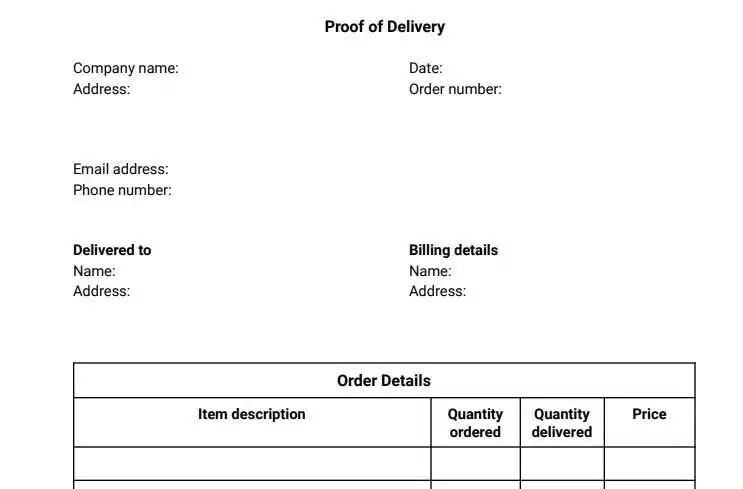In global trade, transshipment is indispensable as ports worldwide are not always directly connected, making it difficult to move goods from their origin to their final destination by a single vessel or mode of transport. It plays a key role in the efficient movement of goods in complex international trade networks by optimizing the logistics chain, reducing transport costs and increasing the flexibility of transporting goods across borders. Therefore, it is essential for both experienced logistics experts and business owners looking to expand their markets to understand the concept of transshipment.

What is Transshipment
Transshipment is the process by which goods are unloaded and reloaded onto another means of transport at one or more points midway from their origin to their final destination. This usually occurs between different modes of transport (e.g. from sea to air or road) or within the same mode. Transshipment is an essential link in the international logistics chain, enabling goods to travel greater distances to destinations that cannot be reached directly.
Why do we need transshipment?
Optimization of transport routes: transshipment enables goods to be transported by the most cost-effective and efficient route, especially if it is impossible to travel directly to the destination.
Reducing transport costs: Transport costs can be reduced by consolidating cargo and using transit ports or airports.
Cross-border transport: In international trade, many goods must be transshipped through ports or airports in multiple countries to reach their final destination.
Increased flexibility: transshipment allows for flexibility in adjusting transport schedules by choosing different modes of transport as needed.
Improved transport timeliness: transshipment helps to choose the best flight, shipment or transfer, thus speeding up the transport process.
How is transshipment tracked?
Freight Bill Number Tracking: Each shipment is assigned a unique bill number during transit, allowing customers to check their shipment’s transshipment status on the carrier’s website or third-party platforms.
Transport Management System: Modern logistics companies utilize TMS to track each shipment to the warehouse, providing real-time updates.
Global Positioning System: Many means of transport (e.g., ships, trucks) are equipped with GPS, which enables real-time monitoring of transport locations.
Port Management System: Each port or airport has its cargo management system that can provide the cargo’s up-to-date status, including whether or not the transshipment has been completed.
What are the busiest transshipment ports?
Port of Singapore: Located at the throat of the Strait of Malacca, it is an important hub connecting the Indian Ocean and the Pacific Ocean and one of the largest transshipment ports in Southeast Asia, with a wide range of transshipment cargoes including containerized cargoes, petrochemicals, electronic products, and so on.
Port of Hong Kong: one of the important foreign trade ports in China, with superior geographical location and perfect port facilities, it is an essential channel for the import and export of goods in South China, with a well-developed transshipment business, especially for the trade between mainland China and the rest of the world plays a key role in transit.
Port of Rotterdam: one of the largest ports in Europe, located in the western part of the Netherlands at the mouth of the Rhine and Maas rivers, it is an essential hub for transporting goods in the inland areas of Europe. Its transshipment mainly includes bulk commodities such as petroleum, coal, metal ores, agricultural products, and other containerized goods.
Dubai Port: Located in the centre of the Middle East, Dubai Port is an important shipping hub connecting Europe, Asia and Africa. Its transshipment business covers oil, natural gas, container cargo, construction materials and other areas, and it is also one of the largest free trade ports in the Middle East.
Shanghai Port: the largest port in China and one of the busiest ports in the world, with a massive volume of transshipment business, not only serving China’s domestic cargo transport needs but also undertaking a large number of international trade transshipment tasks, transshipment of a wide range of goods, including all kinds of manufactured goods, raw materials, agricultural products and so on.
What is the difference between direct and transshipment?
Route of transport: Direct transport means that the goods are transported directly from the place of dispatch to the place of receipt without any other intermediate steps, whereas transshipment requires the goods to pass through one or more intermediate destinations for transit in the course of transport.
Transport time: Direct transport is relatively short because the goods do not need to stop at intermediate places and transit; transshipment usually takes longer than direct transport because it involves the transfer of goods and loading and unloading operations.
Transport Costs: Direct transport costs are relatively high, especially for long-distance transport or transport of small quantities of goods; transshipment can reduce transport costs to a certain extent by consolidating the goods and choosing more economical modes of transport and routes.
Transport Risk: The transport risk of direct transport is relatively concentrated; once problems occur in the transport process, they may directly affect the arrival of goods on time. Although transshipment can reduce the risk by choosing safer transport routes and modes, there is also the risk of loss, damage, or delay of the goods due to the involvement of multiple transport links and transit operations.
Cargo tracking: direct cargo tracking is relatively simple; customers can directly check the status of the goods through a single logistics number; transshipment cargo tracking needs to pay attention to the information of multiple transport links and different means of transport, which is relatively more complex.
Summary
Forwarding plays a vital role in modern international logistics, improving efficiency, reducing costs, and increasing flexibility. Understanding the basic concepts of transshipment, tracking methods, and the difference between direct and transshipment will help you make more informed decisions when choosing your mode of transport. At the same time, understanding the single most common transshipment and its port advantages can also help optimize your transport plans.




